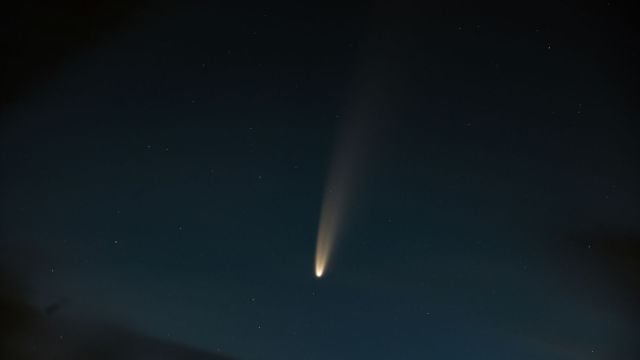Comet Lemmon (C/2025 A6) nears November perihelion, may shine bright enough for naked-eye viewing
Comet Lemmon is will be best observed in the morning sky, requiring early risers to look for it about 90 minutes before sunrise.
 According to the team’s findings, hydrogen cyanide is emerging close to the comet’s rocky nucleus, at rates between 250 and 500 gram per second.(Image for representation: Unsplash)
According to the team’s findings, hydrogen cyanide is emerging close to the comet’s rocky nucleus, at rates between 250 and 500 gram per second.(Image for representation: Unsplash)Comet Lemmon (C/2025 A6), discovered on January 3, 2025, by the Mount Lemmon Survey in Arizona, is rapidly brightening as it approaches its closest point to the Sun, known as perihelion, on November 8, 2025.
At that time, it will be about 49.25 million miles (79.25 million km) from the Sun. Already visible with small telescopes or binoculars, the comet may soon become bright enough to see with the naked eye, potentially reaching a magnitude of +3, similar to the star Megrez in the Big Dipper. This makes it the brightest comet to grace our skies since Comet C/2024 G3 (ATLAS) in January 2025.
Naked-eye comets are rare, appearing roughly once or twice every decade. Unlike the sharp pinpoint of a star, Comet Lemmon will appear as a diffuse, ghostly glow with a faint tail. In 1974, Kenneth Weaver, assistant editor of National Geographic, described a similar comet, Kohoutek, as a “ghostly swath” with a softly glowing core, like a paintbrush stroke of whitewash across the night sky, observed from the dark skies of Kitt Peak National Observatory near Tucson, Arizona.
Today, light pollution makes such pristine viewing conditions harder to find. Urban skyglow obscures stars and comets for most people in the United States.
To see Comet Lemmon clearly, seek a dark-sky location far from city lights, where the Milky Way is visible overhead. In hazy or light-polluted areas, the comet may appear faint or not at all. Comet Lemmon is will be best observed in the morning sky, requiring early risers to look for it about 90 minutes before sunrise.
With the full moon on October 6 making faint objects hard to see, viewing conditions will improve as the moon wanes post-October 13. The comet will then transition to evening viewing after October 16, becoming especially prominent between October 22 and 28, when it will be low in the west-northwest sky.







